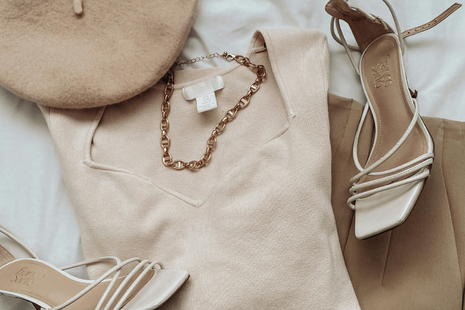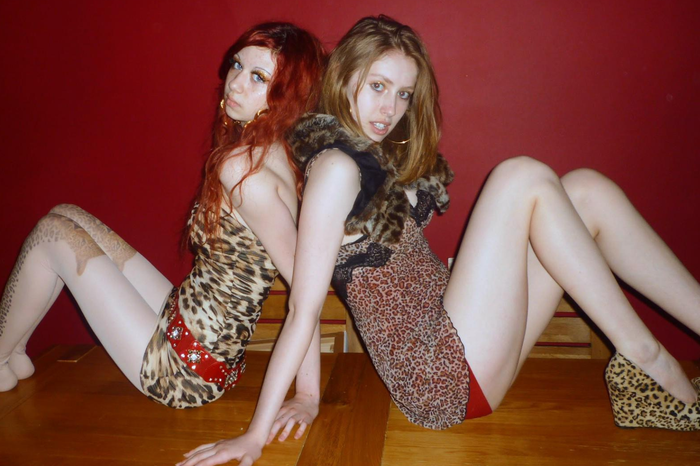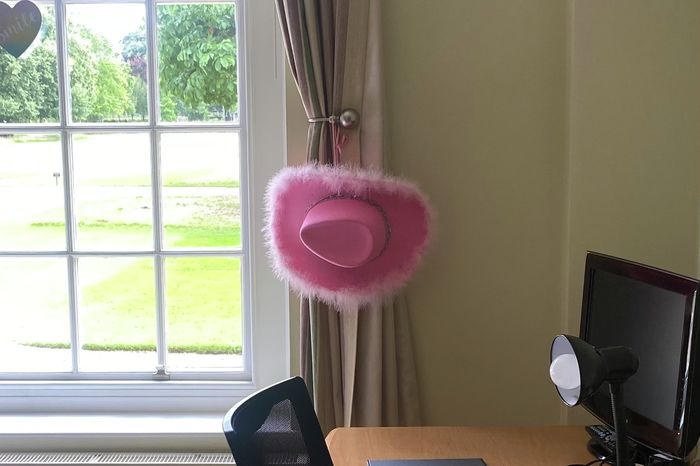‘Timeless’ fashion is a justification for consumerism
Georgina Holmes explores how minimalism falsely presents itself as investment fashion

In a cost-of-living crisis, how can you convince people that they still need new pieces for their wardrobe? You push the fantasy of longevity. The current trend cycle of clothing has brought minimalistic fashion to the forefront precisely because it fits the ‘buy now, wear forever’ narrative. It is a style framed as immune to trendiness.
However, minimalism is trendy. There are subtleties in the silhouettes of the coats we choose, the jeans we wear, and the jewellery we pair with our outfits: funnel necked, single-breasted, winter coat worn ‘buttoned to the top’; bangles and silver accents being layered over our simple black knits; no outfit complete without a pair of ballet flats or loafers to finish. These details, whilst simple, are still subtle trends that might not endure to next winter – even the ‘butter yellow’ basics of spring will quickly be tired.
“These details, whilst simple, are still subtle trends that might not endure to next winter”
Slowly, our favourite influencers and fashion brands have made this style shift. When I began saving more neutral styles to my Pinterest, I thought I had finally found my forever wardrobe – it appeared timeless. And watching Emma Chamberlain’s YouTube video of her building her capsule wardrobe, it seemed like she too had finally found her personal style. She was trying to buy pieces that would never date. I resonated with her preference for neutral tones, interesting but simple knits, and elevated basics. Then it occurred to me: the pieces in her wardrobe still seemed very ‘on trend’.
That being said, minimalism and neutral palettes are certainly more enduring in society than the garish colours, eclectic layering, and juxtaposing textures we’ve seen dominating the trend cycle over the past few years. And it might be that we’re maturing – targeted ads and social media are changing the fashion preferences we’re exposed to as we move into our 20s. It might be seeing influencers like Olivia Neill – who we’ve grown up with – just getting older and maturing in their personal style too. However, there is no doubt that this is a wider shift in fashion beyond individuals looking for wardrobe longevity with available styles slowly becoming more subdued and simpler in contrast to the loud styles of the past years. Where once football jerseys were being paired with patterned skirts over jeans, you might now reel if you heard “leopard print, bows, pops of red, and Jane Birkin-ify your bag”. Minimalism has come in reaction to this as we seek to not be as disposable with our clothes – as we seek to promise to ourselves that our next purchase won’t end up listed on Vinted in just a few months.
And whilst minimal styles might be more ‘timeless’ to society (think corporate attire and dress coded events) there is nothing more timeless than clothes you genuinely like and styles that resonate with your personality. It’s not easy to discern personal preference from current style – everyone can be subconsciously influenced by trends, not realising that our changing appeal to our personal wardrobes might be influenced by exposure to shifting styles. In fact, we can still pick and choose bits from new trend cycles that we genuinely like so long as we can try to imagine that even when it’s ‘out’ we won’t let that dictate whether we continue to wear it or not.
“I might just be Rebecca Bloomwood buying that green scarf, telling herself it could be worn with everything”
This shift toward personal style and ‘timeless’ pieces reflects an important new stance on fashion. Emma Chamberlain’s shock at her own past overconsumption resonated with me – I too had become disgusted by the volume of clothes I was buying, only to resell later. I started investing more: fewer pieces, better quality, and taking care of what I owned. Then I rewatched Confessions of a Shopaholic, and it hit me – I might just be Rebecca Bloomwood buying that green scarf, telling herself it could be worn with everything. It’s a trap that feels more seductive in a time of economic stress, where buying the ‘right’ thing promises to be worth the splurge. We have to strike a balance. Reducing overconsumption is a step in the right direction – but we also need to recognise that ‘investment’ is co-opted in fashion marketing, and even in our own discourse and on social media, to justify spending. Unless you bought a Chloé Paddington bag or Isabel Marant Bekett Sneakers before the boho revival, you’re unlikely to see any kind of return.
Brands know we’re tightening our budgets, so they’ve adapted – by raising the price tags, because the trend is to spend more on fewer pieces. One only needs to look to see that the brands using the word ‘timeless’ the most are the fast-fashion high-street giants. Suddenly, high street stores are stocking £170 wool-blend coats – selling the illusion of value. But the pressure to consume hasn’t eased – we don’t want to miss the one perfect item that promises longevity. But I assure you, that brown wool belted coat you bought from Zara will be ‘out’ in a few years’ time.
‘Timeless’ isn’t the antidote to trend culture – it’s the latest mask it’s wearing.
 News / Uni Scout and Guide Club affirms trans inclusion 12 December 2025
News / Uni Scout and Guide Club affirms trans inclusion 12 December 2025 News / Cambridge Vet School gets lifeline year to stay accredited28 November 2025
News / Cambridge Vet School gets lifeline year to stay accredited28 November 2025 Science / Did your ex trip on King’s Parade? The science behind the ‘ick’12 December 2025
Science / Did your ex trip on King’s Parade? The science behind the ‘ick’12 December 2025 News / Cambridge study finds students learn better with notes than AI13 December 2025
News / Cambridge study finds students learn better with notes than AI13 December 2025 News / Pembroke to convert listed office building into accom9 December 2025
News / Pembroke to convert listed office building into accom9 December 2025









